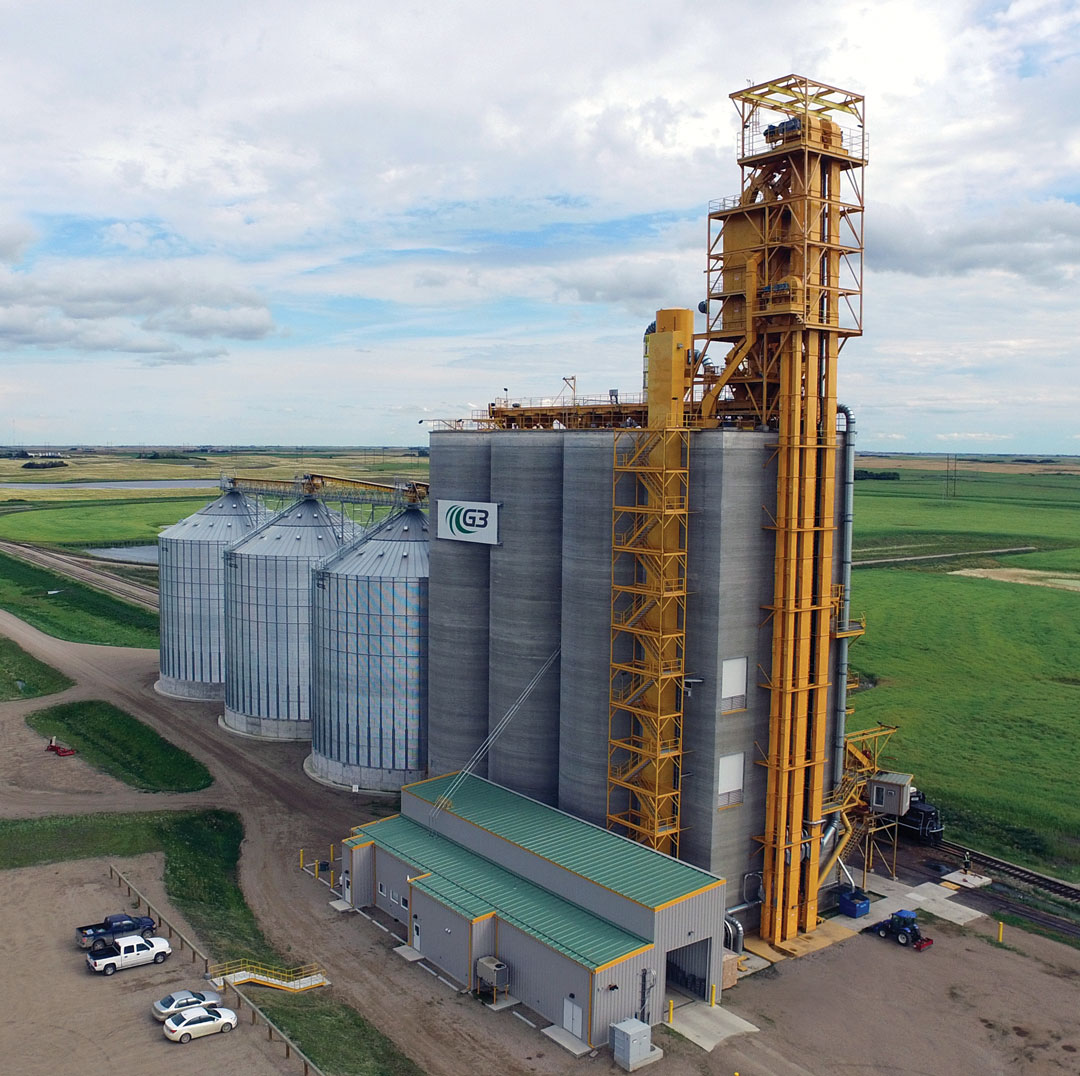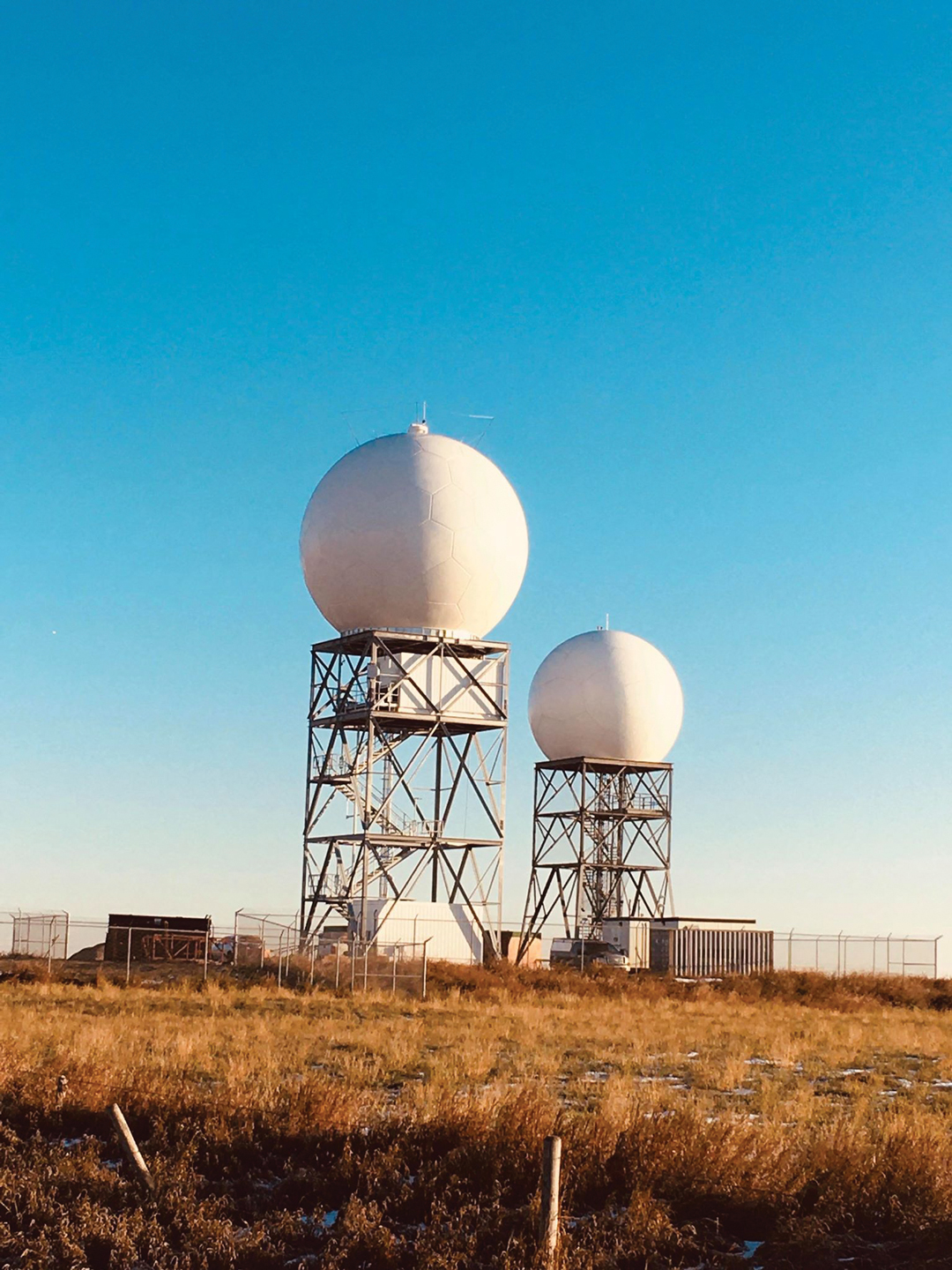WHEN THE GRAIN GETS GOING
LOOP TRACK ELEVATORS PART OF INCREASED WESTERN CANADIAN HANDLING CAPACITY
BY KARIN OLAFSON
Over the last two years, loop track grain elevators have been built across Canada. These facilities can load and move grain more efficiently, but they’re just part of the picture. Much of the efficiency gain over two decades has occurred at conventional, straight-track facilities, where improvement may yet occur.
At loop track facilities, locomotives circle the elevator, receiving grain without braking. Trains of up to 135 cars are loaded continuously, and a locomotive’s power needn’t be turned off. Pickup and delivery is fast and seamless. Volume moved increases, while time taken decreases.
In addition to building a loop track facility at Port Metro Vancouver on the North Shore, G3 Canada Limited is building such facilities across the Prairies. “We plan to build another eight high-efficiency, loop track facilities over the next three years,” said Karl Gerrand, G3 CEO. “Three years from now, G3 will have about 25 facilities across Canada.”
G3 plans to handle between 300,000 and 400,000 tonnes per year at each country facility. Gerrand estimates an efficiency increase of up to 40 per cent.
GrainsConnect is constructing four 130-car rail loops to more efficiently move Canadian grain to buyers in China, Japan, Southeast Asia and the Middle East. President Warren Stow said two facilities in Reford and Maymont, SK, are nearing completion and two in Vegreville and Huxley, AB, are also in the works.
Paterson Grain also operates one loop track facility, with another under construction.
Stow and Gerrand said these facilities are essential for Canadian grain to remain competitive. “Canada continues to be one of the leading grain suppliers in the world,” said Gerrand. “We produce more grain every year, and our infrastructure needs to keep up with the growth.”
“In the time that we’ve been monitoring the grain handling and transportation system, it’s improved phenomenally,” said Mark Hemmes, president of Quorum Corporation, which functions as Canada’s grain monitor. This is indicated by the shortened time it takes grain to go through the system. Between 1999 and 2002, the average was 60 to 80 days, but over the past three years the number has been consistently in the low 40s. In this time, average train size increased from 20 to 30 cars per train to around 85.
Hemmes doesn’t doubt loop-track facilities will create huge efficiency gains, but this is now only theoretical. A closed loop system such as between individual coalmines and Vancouver and Prince Rupert terminals—all with loop-track facilities—can work well, said Hemmes. “That’s not the way the grain industry works.” He noted more than 380 origins deliver to about 17 terminals. “It’s not going to work the same way two trips in a row.”
G3 has the only loop-track port facility. Not yet complete, it will face rail congestion caused by neighbouring elevators, chemical plants and more.
Of the 200 high-throughput elevators out there, most feature straight-through loading configurations and represent huge sunk assets. As well, construction costs are high, and large, flat parcels of land required for loop tracks are scarce. “Loop tracks are a great concept, but you’re not going to mothball a bunch of elevators to do this,” said Hemmes.
While loop tracks become more prevalent, straight-loading facilities will create further efficiency gains. Accommodating 112-car trains, most can be extended to 134 and 136 cars, concluded Hemmes.







Comments